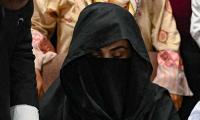Islamabad : Pakistan is spending far less on healthcare than what is recommended by the World Health Organisation (WHO), coordinating international health activities and helping governments improve health services.
As revealed by the Economic Survey of Pakistan 2019-20, the country’s health expenditure totalled 1.1 per cent of gross domestic product in the current financial year against five per cent recommended by the WHO. It was little higher than that (1.2 per cent of GDP) in 2017-18.
The cumulative health spending by the federal and provincial governments went up 1.3 per cent from Rs416.5 billion last year to Rs421.8 billion this year. During the current fiscal, the federal government made the Rs23.976 billion Public Sector Development Programme (PSDP) allocations for 62 health projects but released just less than half of the money (Rs11.484 billion) until three months before the end of 2019-20.
The country’s health indicators have improved over the years. The life expectancy at birth went up from 66.8 in 2016 to 66.9 to 67.1 in 2018, infant mortality rate (per 1,000 live births) from 60.5 in 2016 to 58.8 in 2017 to 57.2 in 2018, maternal mortality rate (per 100,000) from 154 in 2015 to 143 in 2016 to 140 in 2017 and under five years mortality rate (per 1,000) from 73.8 in 2016, 71.5 in 2017 and 69.3 in 2018.
The figures for 2019 weren’t available. Compared with other Asian nations, Pakistan has the highest life expectancy at birth, infant mortality rate and under five mortality rate and population growth rate.
It has also recorded high rates of malnutrition.
According to the ESP report, 40 per cent of children under the age of five years are stunted, 18 per cent wasted and another 29 per cent underweight. Over-nutrition in the form of overweight also prevails among children in both rural and urban areas and among women.
Twenty-four per cent of the women of reproductive age are overweight, while 14 per cent are obese with a high ratio of 17 per cent in urban settings and a lower ratio of 12 per cent in villages. The economic costs of malnutrition are high and persistent with around three per cent ($7.6 billion) of loss of GDP every year in the country due to low productivity from the poor physique, cognitive development, schooling, and increased health care costs.
The report also revealed that around 18 per cent (38 million) of the country’s population was severely food insecure. The number of healthcare providers in the country has also registered a steady increase during the last three years.
The registered doctors totalled 208,007 in 2017, 220,829 in 2018 and 233,261 in 2019, dentists 20,463 in 2017, 22,595 in 2018 and 24,930 in 2019, nurses 103,777 in 2017, 108,474 in 2018 and 112,123 in 2019, midwives 38,060 in 2017, 40,272 in 2018 and 41,810 in 2019 and lady health visitors 18,400 in 2017, 19,910 in 2018 and 20,565 in 2019.
The report said the national health security was increasingly threatened in Pakistan due to population growth, rising urbanization, environmental pollution and change in lifestyle of people, among other factors.
“The challenges to the health system will be further exacerbated by the direct and indirect impact of the coronavirus pandemic, which has posed considerable health risks to an already vulnerable population living in the country with inadequate healthcare infrastructure,” it warned.
Legendary poetess Parveen Shakir. — APP/FileIslamabad: The Parveen Shakir Trust will observe the 30th death...
Coordinator General of COMSTECH Prof Dr Muhammad Iqbal Choudhary seen in a meeting on the launch of the “COMSTECH...
Children seen at the 'Bookshaw' session for children and a health camp for mothers and babies organised by Association...
Fatima Jinnah Women’s University building can be seen. — ILM Website/FileRawalpindi: Fatima Jinnah Women...
A general view of the Margalla Hills Islamabad can be seen in this image. — Facebook/Islamabad Wildlife Management...
A picture from an exhibition based on rare pictures of Quaid-e-Azam inaugurated by Assistant Commissioner Murree on...







